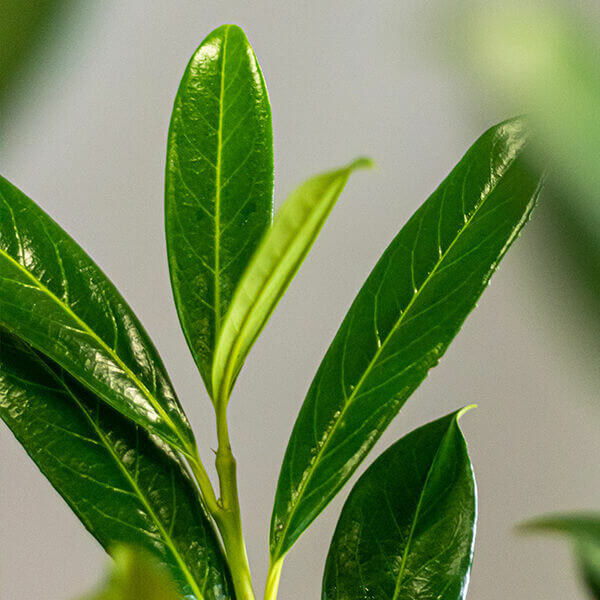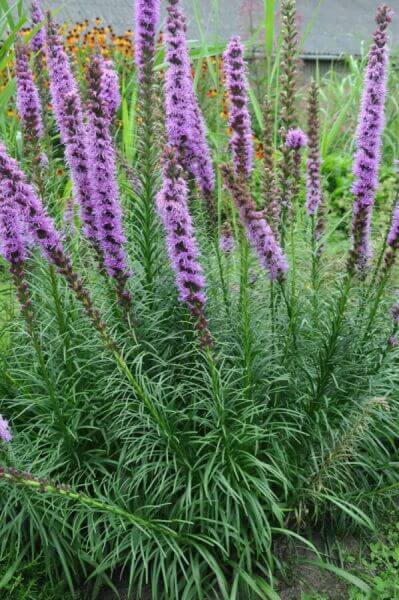Best Hedging Plants For Japanese Gardens
Best Hedging Plants For Japanese Gardens
Blog Article
Best Hedging Plants For Flowering Borders
Improve your garden's appeal with rich hedge varieties such as Yew (Taxus), Thuja, Laurel, Photinia, and Bamboo, commemorated for their structural integrity and environmental advantages.
Yew and Thuja offer evergreen protection and winter durability, while Laurel uses quick growth and broad, fragrant leaves.
Photinia includes seasonal appeal with its vibrant red foliage, and Bamboo provides a low-maintenance, peaceful ambiance.
These hedges enhance air quality, lower sound, and create tranquil, personal spaces.
Correct planting, spacing, and maintenance guarantee energetic development and ecological harmony.
Check out how these lavish ranges can elevate your garden's beauty and well-being.
Secret Takeaways
Change Your Garden With Lush Hedge Ranges
- Select Yew for its dense, evergreen growth and exceptional durability.
- Go with Laurel for its fast growth and broad leaves, ensuring fast personal privacy.
- Choose Photinia for its vibrant seasonal foliage, which turns a striking dark red.
- Utilize Bamboo for a low-maintenance, winter-hardy hedge with aesthetic appeal.
- Space plants 2-3 per meter and prune routinely for ideal development and health.
Popular Hedge Plants
When changing a garden with lavish hedge ranges, it's necessary to think about popular hedge plants such as Yew, Thuja, Laurel, and Photinia due to their special characteristics and benefits.
Yew (Taxus) is extremely respected for its longevity and dense, green growth, making it a prime choice for enduring landscapes.
Thuja is kept in mind for its evergreen foliage and robust winter season strength.
Photinia includes seasonal vibrancy with red leaves that darken with time, developing vibrant visual appeal.
Laurel provides fast growth and fragrant, broad leaves, ideal for fast personal privacy.
In Addition, Bamboo is an exceptional option for ambiance, offering a low-maintenance, winter-hardy option that boosts the garden's visual with its sophisticated, swaying walking sticks.
These selections accommodate a range of horticultural requirements and preferences.
Benefits of Garden Hedges
Garden hedges use a wide range of benefits, making them a valuable addition to any landscape. These natural barriers are cost-efficient to implement and supply significant wind protection, boosting air blood circulation and adding to noise decrease. The dense foliage of hedges like Thuja and Beech ensures personal privacy by obstructing visibility, developing a remote and tranquil environment.
Hedges likewise play an essential function in microclimate policy, offering a steady environment that promotes plant development and decreases temperature level fluctuations. Their detailed leaf structures filter contaminants, improving air quality and adding to a much healthier garden community.
Additionally, hedges stand out in noise decrease, taking in and deflecting acoustic waves to lower ambient sound levels. This double functionality of offering both acoustic and visual privacy enhances the total tranquility and aesthetic appeal of any garden.
Planting and Maintenance Tips
For a successful hedge, precise preparation of the planting location is crucial. Ensure the soil has appropriate pH and drain to support strong root advancement.
Space the plants appropriately for the picked types. Water the hedge often throughout its preliminary development phase, changing as needed with seasonal changes.
Carry out a systematic pest control and disease prevention strategy, using chemical or organic treatments when required. Frequently check for aphids, termites, and fungal infections.
Apply mulch to retain moisture and suppress weeds. Seasonal pruning promotes dense development and air blood circulation, necessary for plant health.
Following these guidelines will assist you cultivate a lively, well-kept hedge that improves the charm of your garden.
Spacing and Trimming Guidelines
Spacing and Trimming Standards
Correct spacing and trimming are essential for cultivating healthy, visually appealing hedges. Adequate spacing makes sure each plant gets adequate nutrients, light, and airflow.
Follow these standards for ideal hedge maintenance:
- Spacing: Position hedge plants 2-3 plants per meter to encourage robust development.
- Pruning Methods: Regular pruning is necessary for keeping preferred hedge height and shape. Trim brand-new growth in summer and cut down older wood throughout winter.
- Seasonal Care: Change trimming schedules and methods according to seasonal requirements to guarantee plant health.
- Hedge Height: Regularly screen and cut to preserve the wanted hedge height and accomplish uniform looks.
Sticking to these actions will ensure your hedge grows, improving both the appeal and performance of your garden.
Choosing the Right Hedge
Selecting the Right Hedge
Picking the suitable hedge includes assessing aspects such as mature height, foliage density, and environmental strength. Successful hedge plant selection needs comprehending each species' growth qualities and site-specific flexibility.
For example, Yew (Taxus) offers outstanding durability and thick growth, while Thuja is significant for its winter durability. In addition, considering maintenance requirements is important; fast-growing types like Laurel or Privet need regular cutting, whereas low-maintenance alternatives like Bamboo or Ivy may be more suitable for those looking for very little maintenance.
Ecological elements such as soil type, light schedule, and moisture conditions ought to also direct the selection process. This cautious method guarantees the selected hedges will flourish, supplying both aesthetic and functional advantages to the garden landscape.
Shipment and Planting Recommendations
To ensure your hedge plants flourish, they ought to be delivered by specialized couriers and planted quickly upon arrival.
Follow these important steps for effective planting:
- Soil Preparation: Enhance the soil with raw material to improve drainage and nutrient content.
- Planting Depth: Develop a trench two times the width and equivalent to the depth of the root ball.
- Watering Methods: Water thoroughly after planting, keeping the soil regularly damp but not saturated.
- Mulching: Use a layer of mulch to keep moisture and reduce weeds.
Consumer Support and Service
Given the vital role of timely help in horticultural pursuits, our client support team is offered 6 days a week through telephone, e-mail, and social networks to use skilled advice and quickly resolve any issues. Their devotion to fast action times makes sure consumer satisfaction by resolving queries related to plant health, optimal planting methods, and upkeep schedules.

Reaction Time
-----------------
Within 24 hours
Within 24 hours
This comprehensive support group, strengthened by an outstanding 9.3/ 10 consumer ranking, highlights our dedication to boosting the gardening experience for every client.
Frequently Asked Questions
For How Long Does It Consider Hedge Plants to Develop?
Hedge plants usually need one to 3 years to end up being totally developed, with the specific period differing by types and growing conditions.
Efficient care during this crucial period is important for robust growth. Consistent watering, vigilant weed control, and suitable fertilizer application are critical in promoting strong root development.
For example, fast-growing species like Laurel may develop quicker, while slower-growing ranges such as Yew might take longer. Diligent maintenance accelerates the establishment process, resulting in healthy and dense hedges.
What Are the very best Hedge Plants for Personal Privacy?
The concern of the best hedge plants for privacy includes examining evergreen and deciduous alternatives.
Evergreen hedges like Thuja, Laurel, and Cypress offer year-round coverage, ensuring constant privacy.
In contrast, deciduous hedges such as Beech use seasonal personal privacy, shedding leaves in colder months.
Secret upkeep suggestions for personal privacy hedges consist of regular cutting, fertilizing in spring, and appropriate spacing-- typically 2 to 3 plants per meter.
In addition, consistent watering and diligent weed elimination are important for promoting healthy, dense development.
Can Hedge Plants Draw In Wildlife to My Garden?
Yes, hedge plants can attract wildlife to your garden by offering essential advantages like shelter, food, and nesting sites, therefore improving regional biodiversity. For circumstances, yew, holly, and laurel are excellent for drawing in birds, while ivy supports a variety of bugs.
Nevertheless, it's important to keep in mind that there are some drawbacks, such as increased upkeep to handle insects and routine upkeep. Carefully picking and maintaining hedge ranges can help balance these disadvantages and advantages, ultimately promoting a sustainable and vibrant community in your garden.
Exist Any Blooming Hedge Plants Available?
Yes, there are flowering hedge plants available that can improve the appeal of your garden.
For instance, Elaeagnus, also referred to as Olive Willow, produces aromatic white flowers in the fall, including a touch of elegance.
Photinia, another popular choice, showcases dynamic red leaves that develop into an abundant green, creating a dynamic visual impact throughout the seasons.
To make sure these plants grow, it's necessary to practice appropriate pruning methods and seasonal upkeep, such as cutting brand-new development in the summer season and cutting back in the winter.
These procedures will assist keep the health and aesthetic appeal of your flowering hedges.
How Do I Prevent Insects in My Hedge Plants?
To prevent insects in hedge plants, utilize natural insect control check here techniques and keep correct hedge care. Present helpful pests like ladybugs, which prey on harmful pests, to create a well balanced ecosystem.
Frequently check your hedges for indications of problem and without delay remove any affected parts to avoid the spread. Make sure the health of your hedges by using well balanced fertilizers and offering sufficient water.
Utilize mulching to retain soil moisture and correct spacing to lower plant tension and promote robust growth. These practices collectively assist in decreasing bug problems and maintaining a healthy hedge.
Conclusion
In essence, choosing the ideal hedge ranges such as Yew, Thuja, and Laurel can transform any garden into a tranquil sanctuary. These plants offer year-round greenery, boost visual appeal, and deal useful benefits like noise decrease and wind defense.
Appropriate planting techniques, precise spacing, consistent watering, and seasonal trimming are essential for ideal growth.
Reliable shipment services and professional consumer assistance ensure a smooth experience from purchase to planting, making it simpler than ever to raise your outdoor area.
Garden hedges provide a multitude of advantages, making them a valuable addition to any landscape. These natural barriers are cost-efficient to implement and supply considerable wind defense, enhancing air blood circulation and contributing to noise decrease. The dense foliage of hedges like Thuja and Beech guarantees personal privacy by obstructing presence, creating a tranquil and secluded environment.

Pruning Strategies: Routine pruning is vital for preserving desired hedge height and shape. Cut brand-new growth in summer season and cut back older wood throughout winter.
Report this page